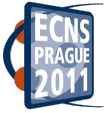Experimental facilities
Experimental basis of the Department of Neutron Physics is located at the research reactor LVR-15 operated by Research Center Řež, Ltd., and at the linear accelerator (Tandetron).
NPL instruments at the research reactor LVR-15
The research reactor LVR-15 is a medium power light water research reactor operated by the Research Centre Řež. It is a medium power water reactor providing moderate flux of thermal neutrons at nine horizontal radial channes and vertical irradiation channels. NPL uses this facility as a source of neutrons for neutron scattering experiments and nuclear analytical methods. Five neutron scattering instruments are installed at four horizontal thermal neutron channels (HK4 HK6, HK8 and HK9) and serve primarily to resarch in the fields of material science and solid state physics. In addition, one horizontal channel (HK3) hosts special beamline for neutron depth profiling and prompt gamma activation analyses.
Read more...
Accelerators
Two electrostatic accelerators, old Van de Graaff and new Tandetron 4130 MC are used for modification and characterization of micro- a nano structured materials.
Tandetron
Installation of new analytical devices in the Tandetron laboratory is in progress. The RBS-channeling device for analyses of crystalline materials and ERDA-TOF device for depth profiling of light elements were put into routine operation. Ion microprobe, unique in CR, was installed in 2009. The Tandetron based device for high energy ion implantation has been in routine use. The research activities of the group has mainly been concentrated on preparation, modification and characterization of polymer-metal composites (collaboration with Institute of Chemical technology-Prague, the University of J.E Purkyne-Ústí nad Labem and Kazan Physical-Technical Institute-Russia), chalkogenide glasses (University of Pardubice), optical coatings (Institute of Physics AS), B-C-N-Si based hard coatings (University of West Bohemia), bioactive materials (Institute of Physiology AS), diamond-like and siloxan based coatings (Masaryk University, TU Brno). Other activities include the study of diffusion of water solutions in minerals (Nuclear research Institute), development of ion beam based analytical techniques (collaboration with FZR Rossendorf-Germany) and testing of position sensitive detectors (Institute of Technical and Experimental Physics-Prague). For more information, see this link.
Van de Graaff
The Van de Graaff machine was designed by an American physicist Robert Jemison Van de Graaff (1901-1967).
Here a continually moving belt of insulating material runs between two pulleys which are separated by an insulated column. The lower pulley is earthed and attached to. The pulley is a sharp metallic comb which is maintained at a potential difference of a few kV between itself and the pulley. A high electric field is produced at the time of the comb. The electrical discharge occurs through the belt from the comb to the pulley, removing electrons from the belt, making it positively charged. The belt carries the charge up to the top pulley which is inside a large ball shaped metal electrode. The electrode then gets an increasing positive charge with correspondingly high electric potential. The voltage rises rapidly until an equilibrium is established where the rate of loss of negative charge balances the positive charge currently carried by the moving belt. In this way, the Van de Graaff machine can reach very high electric potentials of a few million volts.
In a Van de Graaff accelerator, the high electric potential is coupled to an accelerating tube. At it's top there is an ion source that produces the particles to be accelerated. The maximum accelerating potential is limited by breakdown across the accelerating tube and charge leakage from the high voltage electrode. However, with careful design, Van de Graaff accelerators operating at accelerating potentials in excess of 25 MV have been built.

Read more...
Access for external users
Neutron Physics Laboratory (NPL) offers access to its facilities for external users. Modalities of the access are the following:
- Through the NPL proposal system. For eligible users from EU and associated states, a support within NMI3 project can be asked for.
- By establishing a cooperation with a NPL scientist on a NPL-supported research programme (i.e. in-house experiments). Contact the particular instrument responsible in case of interest for such a cooperation.
- Using beamtime quota allocated to a particular facility in the frame of bilateral contracts.
Read more...





